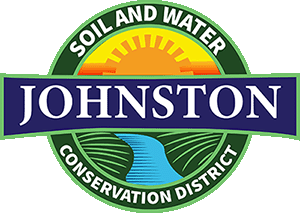
Soil and Water Conservation
Johnston County, North Carolina

Johnston County, North Carolina
At the time of European settlement, it is estimated that over 200 million acres of wetland existed in the United States. In 1975, wetlands were estimated to be 99 million acres, Iowa, for example, has lost 99 percent of its wetland areas. Many wetlands have been converted to agricultural areas, and wetlands have also been lost to real estate development and conversion to forested areas for timber production. Laws used to encourage wetlands destruction for "useful purposes".
Wetlands are still being destroyed at an alarming rate, but there is a new awareness of wetlands value, and an increased interest in preserving wetland areas. Some wetlands have been restored, and governments and private groups have begun purchasing wetlands areas for conservation. Future amendments to laws such as the Clean Water Act are expected to focus on protecting existing habitats.
Because so many acres of wetlands have been lost, Federal and state governments have worked hard to establish ways to protect and revitalize remaining coastal areas and wetlands. Private concerns have also worked toward wetland preservation.
Approaches toward wetlands protection have included acquisition of wetland areas, both by governments and private groups such as The Conservation Foundation and The Nature Conservancy. Buying duck stamps at the post office also raises money for wetlands conservation. Economic incentives for wetland preservation have included tax reductions and deductions for wetland donation, and economic disincentives to wetland destruction have also been put in place. A provision of the Food Security Act eliminates farm program benefits for wetlands converted into farmlands.
Specific regulation of wetlands comes with Section 404 of the Clean Water Act, amended in 1987. Under this law, the discharge of dredged or fill materials into the waters of the U.S. requires a permit from the Army Corps of Engineers. This has prevented the loss of many wetlands, but it is not a comprehensive program for protection. For example, some isolated yet ecologically valuable wetlands are not regulated.
Most coastal states have laws in place to protect coastal wetlands, but fewer than 20 states have enacted provisions to protect inland wetland areas. The National Estuary Program, established in 1985, now includes 12 of the nation's largest estuaries and addresses problems affecting the estuaries, such as loss of habitat, contamination of sediments by toxic materials, depletion of oxygen, and bacterial contamination. Management plans for each estuary are due to be completed in the early 1990's and steps taken to restore their environmental - and economic - benefits.
An estimated 43 percent of all rare and endangered animal species are either located in wetlands in or are dependent on them. Government agencies have recently undertaken restoration of wetlands in large-scale projects. One example is the restoration of thousands of acres of floodplain marsh along Florida's Kissimmee River. Some wetland habitats, such as freshwater marshes are relatively easy to reproduce and regenerate, while others, such as high salt marshes and forested wetlands, may take generations to recreate.
The restoration of wetlands habitats is a young and very complex science than will take years to understand fully. Wetland restoration must overcome a variety of problems, such as financial considerations, invasion of unwanted vegetation, proper water recharge and sediment control, and interaction of wetlands with adjacent waterways.
Page last updated: July 22, 2022